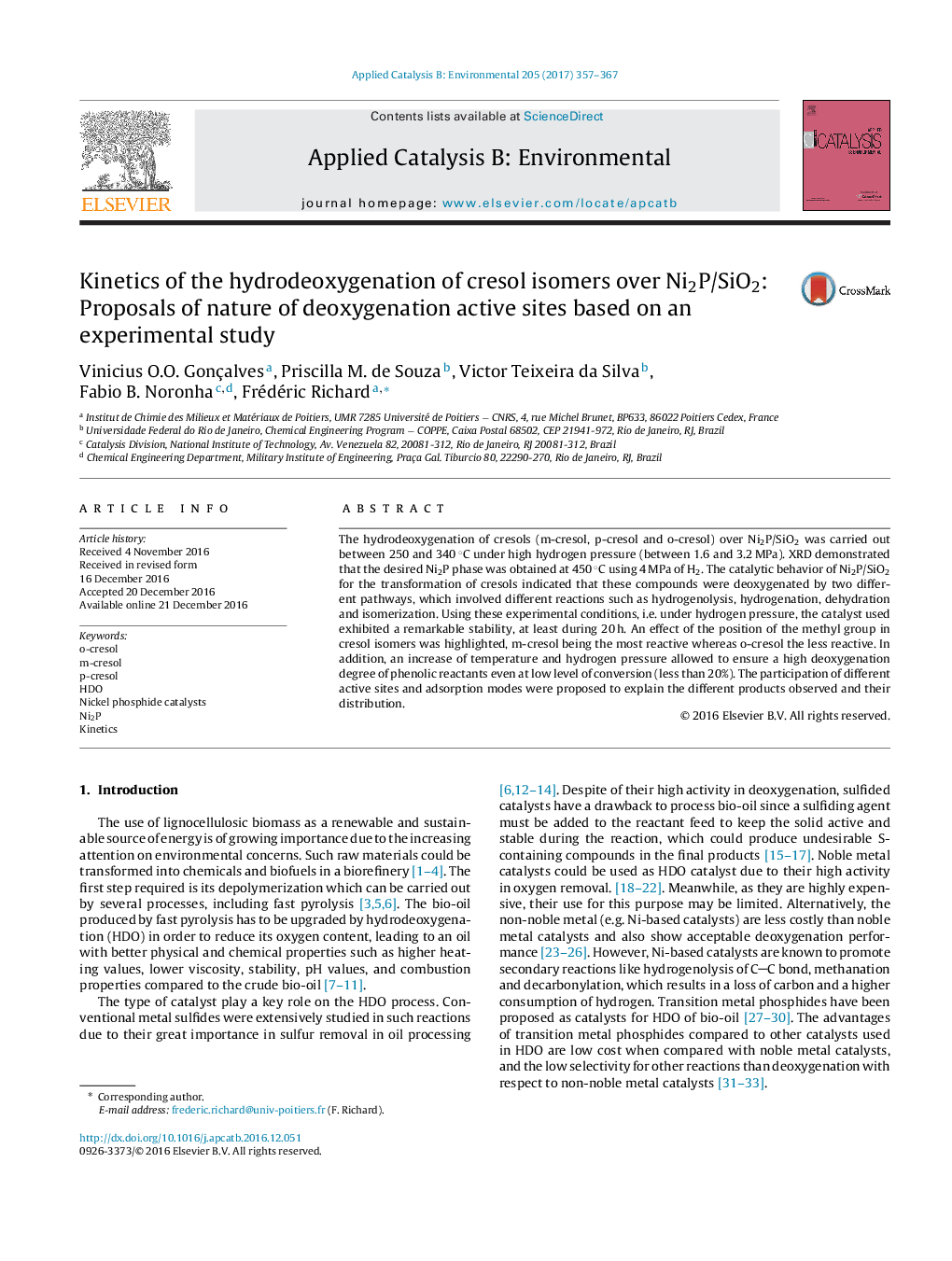| Article ID | Journal | Published Year | Pages | File Type |
|---|---|---|---|---|
| 6454344 | Applied Catalysis B: Environmental | 2017 | 11 Pages |
â¢Ni2P/SiO2 favored the deoxygenation of cresols through the HYD route.â¢Kinetic analyses allowed to measure the effects of the methyl position, T and P.â¢An effect of the position of the methyl group of cresol isomers was shown.â¢Several kinds of active sites and adsorption modes were proposed.
The hydrodeoxygenation of cresols (m-cresol, p-cresol and o-cresol) over Ni2P/SiO2 was carried out between 250 and 340 °C under high hydrogen pressure (between 1.6 and 3.2 MPa). XRD demonstrated that the desired Ni2P phase was obtained at 450 °C using 4 MPa of H2. The catalytic behavior of Ni2P/SiO2 for the transformation of cresols indicated that these compounds were deoxygenated by two different pathways, which involved different reactions such as hydrogenolysis, hydrogenation, dehydration and isomerization. Using these experimental conditions, i.e. under hydrogen pressure, the catalyst used exhibited a remarkable stability, at least during 20 h. An effect of the position of the methyl group in cresol isomers was highlighted, m-cresol being the most reactive whereas o-cresol the less reactive. In addition, an increase of temperature and hydrogen pressure allowed to ensure a high deoxygenation degree of phenolic reactants even at low level of conversion (less than 20%). The participation of different active sites and adsorption modes were proposed to explain the different products observed and their distribution.
Graphical abstractDownload high-res image (208KB)Download full-size image
